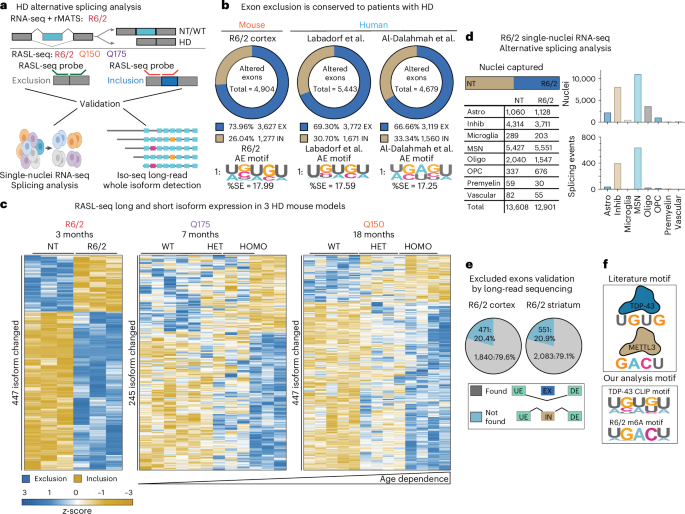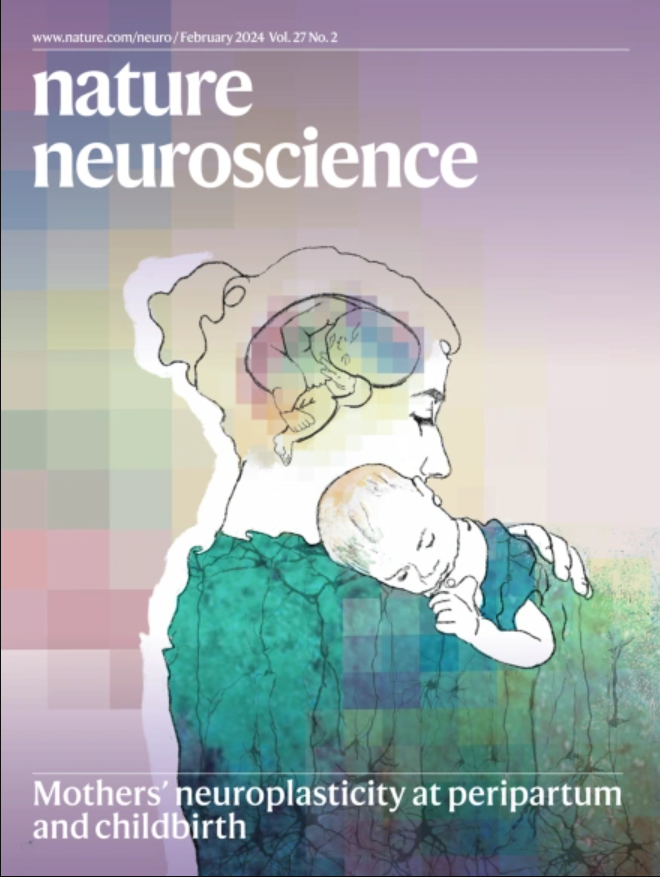亨廷顿病的异常剪接伴随着TDP-43活性的破坏和m6A RNA修饰的改变
IF 21.2
1区 医学
Q1 NEUROSCIENCES
引用次数: 0
摘要
亨廷顿氏病(HD)是由HTT基因CAG重复扩增引起的,导致基因表达改变。然而,导致HD中RNA加工中断的机制尚不清楚。在这里,我们发现TDP-43和n6 -甲基腺苷(m6A)写蛋白METTL3是多种HD系统中外显子跳变的上游调控因子。在HD小鼠和人脑中,TDP-43的核定位被破坏,磷酸化的TDP-43在细胞质中积累,TDP-43也与HTT核聚集体样体共定位,这与突变的HTT包涵体不同。TDP-43与编码hd相关差异表达和异常剪接基因的rna的结合减少。最后,m6A RNA修饰在HD R6/2小鼠脑纹状体中异常表达的RNA上减少,包括在TDP-43结合位点附近的聚集位点。我们的证据支持TDP-43功能丧失与m6A修饰改变是HD患者选择性剪接的机制。本文章由计算机程序翻译,如有差异,请以英文原文为准。


Aberrant splicing in Huntington’s disease accompanies disrupted TDP-43 activity and altered m6A RNA modification
Huntington’s disease (HD) is caused by a CAG repeat expansion in the HTT gene, leading to altered gene expression. However, the mechanisms leading to disrupted RNA processing in HD remain unclear. Here we identify TDP-43 and the N6-methyladenosine (m6A) writer protein METTL3 to be upstream regulators of exon skipping in multiple HD systems. Disrupted nuclear localization of TDP-43 and cytoplasmic accumulation of phosphorylated TDP-43 occurs in HD mouse and human brains, with TDP-43 also co-localizing with HTT nuclear aggregate-like bodies distinct from mutant HTT inclusions. The binding of TDP-43 onto RNAs encoding HD-associated differentially expressed and aberrantly spliced genes is decreased. Finally, m6A RNA modification is reduced on RNAs abnormally expressed in the striatum of HD R6/2 mouse brain, including at clustered sites adjacent to TDP-43 binding sites. Our evidence supports TDP-43 loss of function coupled with altered m6A modification as a mechanism underlying alternative splicing in HD. Nguyen et al. identify TDP-43 and METTL3 as key regulators of disrupted RNA splicing in Huntington’s disease, offering insight into how TDP-43 mislocalization and aberrant m6A RNA modification and localization relate to disease pathogenesis.
求助全文
通过发布文献求助,成功后即可免费获取论文全文。
去求助
来源期刊

Nature neuroscience
医学-神经科学
CiteScore
38.60
自引率
1.20%
发文量
212
审稿时长
1 months
期刊介绍:
Nature Neuroscience, a multidisciplinary journal, publishes papers of the utmost quality and significance across all realms of neuroscience. The editors welcome contributions spanning molecular, cellular, systems, and cognitive neuroscience, along with psychophysics, computational modeling, and nervous system disorders. While no area is off-limits, studies offering fundamental insights into nervous system function receive priority.
The journal offers high visibility to both readers and authors, fostering interdisciplinary communication and accessibility to a broad audience. It maintains high standards of copy editing and production, rigorous peer review, rapid publication, and operates independently from academic societies and other vested interests.
In addition to primary research, Nature Neuroscience features news and views, reviews, editorials, commentaries, perspectives, book reviews, and correspondence, aiming to serve as the voice of the global neuroscience community.
 求助内容:
求助内容: 应助结果提醒方式:
应助结果提醒方式:


